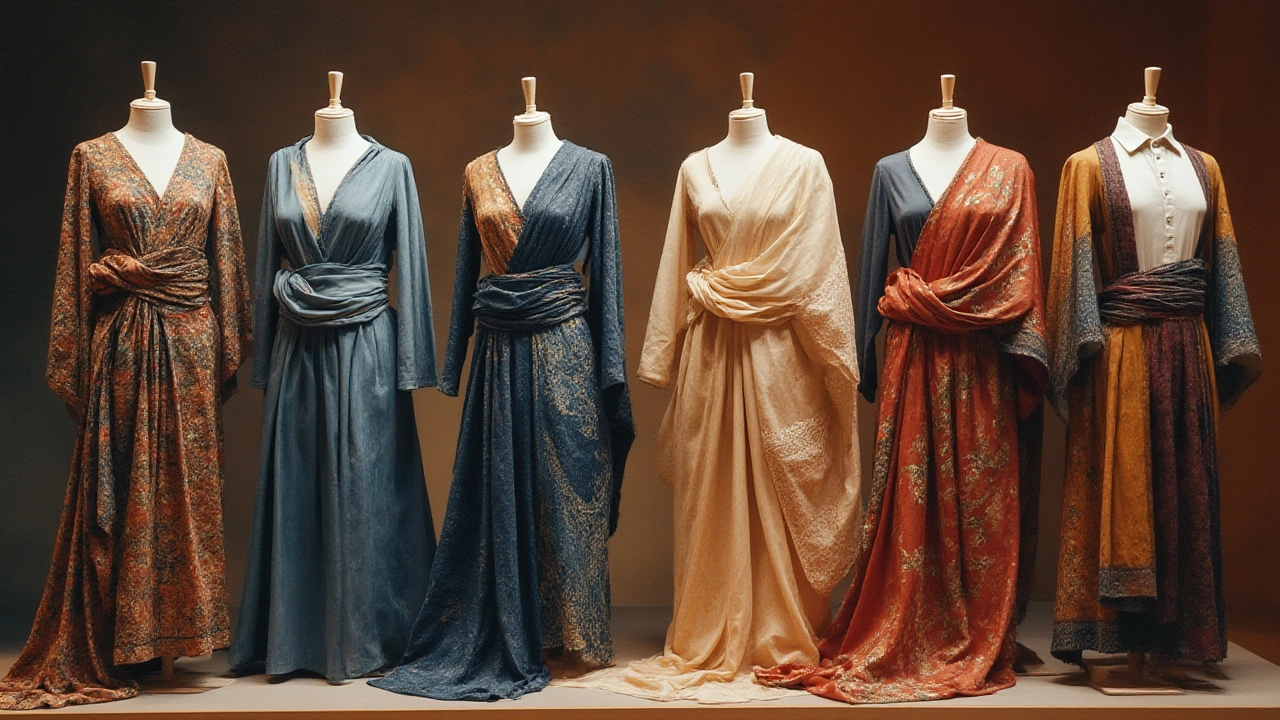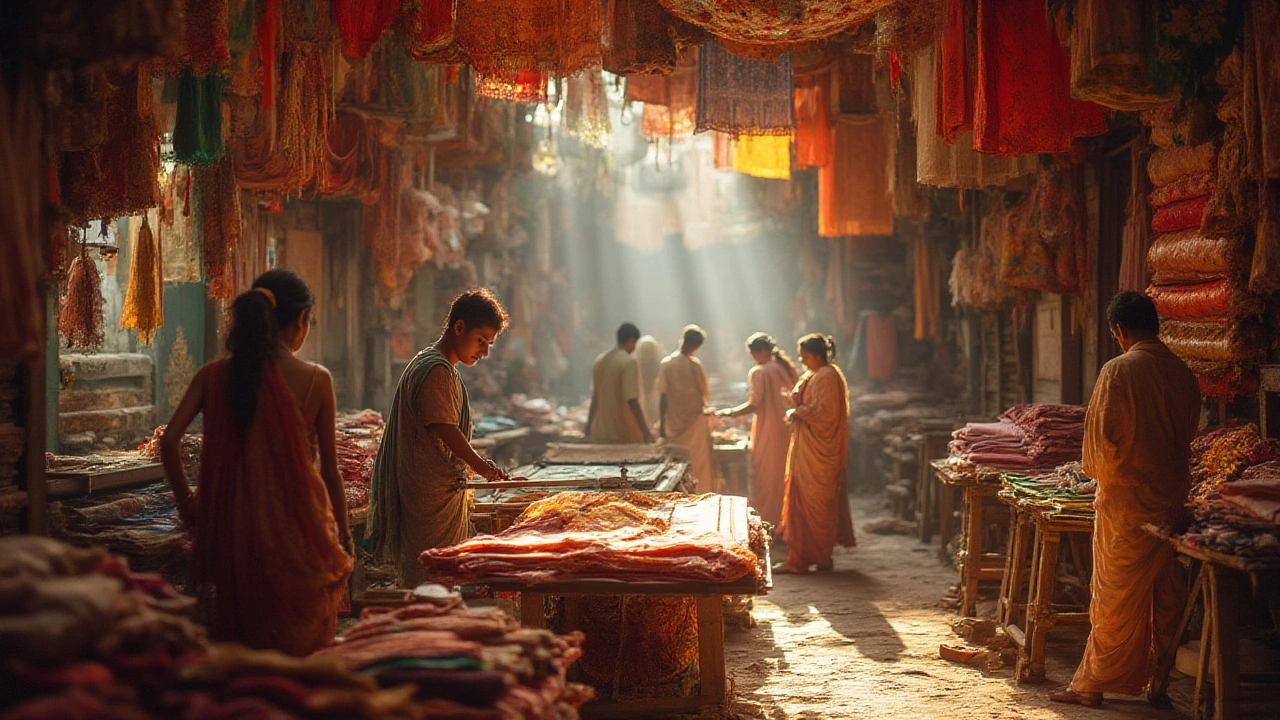If you ask anyone who truly cares about fabric—tailors, designers, or just folks with a thing for gorgeous sheets—they’ll tell you quality isn’t the same everywhere. Some countries pump out fabrics that feel like clouds and last a lifetime. Others? Let’s just say you’ll know the difference after a couple of washes. So, which country actually wins the title for the best textile quality? Turns out, it’s not such a simple answer. But the journey to find out is packed with colorful history, trade secrets, and more than a few surprises.
The Heavyweights: Countries That Set Global Textile Standards
Bring up textile quality in any fashion-focused conversation and a few names immediately pop up. Italy, Japan, India, Turkey, and Egypt regularly make the list—and with pretty good reason. Let’s start with Italy. Italian mills are basically legends in the luxury clothing world. Their wool, silk, and cotton turn up in brands the rest of us only dream about affording. Ever heard of Loro Piana or Ermenegildo Zegna? Yeah, those are Italian and the secret lies in family-owned mills that guard their weaving methods like ancient treasure. What makes it wild is the obsession with detail—some Italian fabrics involve as many as 1,000 quality checks before hitting the racks.
Japan is another giant, but not in the way you might think. They turned denim, for example, into a cult favorite—Japanese selvedge denim is to jeans what a perfectly aged whiskey is to a Friday night. The secret sauce? Using old looms, thick cotton yarn, and a slow weaving process that makes every pair uniquely tough and beautiful.
Flip to India, and you’ll find the softest cotton on earth. There’s a reason Indian cotton—especially from places like Gujarat—is a staple for anyone who hates scratchy clothes. It’s super breathable, incredibly absorbent, and easy on the skin. Plus, India’s been at this for about 4,000 years, so there’s a bit of experience at play.
Egypt tells a similar story, but dials up the luxury. Egyptian cotton is the textbook example of plush bedding. Each fiber is longer, which means you can spin it into threads so fine and strong, it feels almost silk-like. Egyptian Giza 45 cotton, for instance, is the stuff hotel dreams are made of.
Let’s not ignore Turkey. Turkish towels—peshtemals—are famous for a reason. The secret? A specific species of cotton, called Turkish cotton, grown in the Aegean Region. It becomes more absorbent after every wash, unlike most towels that get stiffer with time.
Take a look at the quick facts below:
| Country | Signature Textile | Famous Quality Feature | Known Brands/Exports |
|---|---|---|---|
| Italy | Wool, Silk, Cotton | Ultra-fine finishing, heritage weaving | Loro Piana, Zegna |
| Japan | Denim, Indigo Cotton | Deep indigo dye, durable weaving | Kojima Denim |
| India | Cotton, Silk | Softness, breathability | Raymond, Bombay Dyeing |
| Egypt | Cotton | Long, strong fibers | Luxury bed linens |
| Turkey | Turkish Cotton | Super soft, absorbent towels | Peshtemals, towels |
Pretty eye-opening, right? Each country’s textile style is stamped with its own story and method—kind of like how pizza tastes wildly different in Naples versus New York.
What Really Makes Textile Quality Stand Out?
People talk about “good fabric” all the time, but what does that even mean? Textile quality doesn’t just come down to how a shirt feels in a store. It’s a cocktail of science, tradition, and sometimes, plain weather luck.
First up: the raw materials. If you’re making cotton fabric, you need long, strong cotton fibers. Egyptian and Indian cotton get top marks because they grow in climates where the fibers can develop with extra length and strength. For wool, the best stuff comes from Merino sheep—often in Italy or Australia—where the animals lead stress-free, pretty chilly lives. Silk? The magic’s in the mulberry leaves fed to silkworms and the clean water they drink—Japan and China both nail this.
Then comes spinning and weaving. Italian mills sometimes use looms that have been running (and fine-tuned) for over a century. In Japan, the stubborn use of shuttle looms—a totally old-school technology—means the edges of the fabric never fray, which matters way more than you’d imagine. Every step, from how the thread is twisted to how it’s dyed (for example, using real indigo in Japan’s case) shapes the end result.
Some countries have an edge just because of how seriously they take their craft. Italy even has districts, like Biella, that are legends in wool weaving—half the people there grew up around looms, and you better believe they notice the tiniest imperfection. In Turkey, the tradition goes so deep that some villages still make towels, blankets, and rugs using techniques from the Ottoman Empire.
Here’s a quick tip: next time you’re shopping, scrunch a bit of the fabric in your hands and let go. High-quality fabrics quickly bounce back—no stubborn wrinkles. Pay attention to the label too. “Long staple” cotton, for instance, means softer, longer threads that give you fewer balls of fluff and more years of use. For denim, words like “selvedge” or “raw” usually mean extra care went into the cloth.
It’s not always about price, either. A super-expensive shirt made with bad stitching or inferior thread may fall apart in months, while a humble-feeling towel from Turkey might get fluffier with each wash. And never underestimate your senses—high-end fabrics feel smooth, heavy for their thickness, and don’t pill like budget stuff does.

Behind the Glory: How History, Trade, and Culture Shape Textile Leaders
So why do the best textiles seem to cluster in certain countries? History has a big role here—trade routes, colonial twists, and centuries of mastering the same craft tend to leave a mark.
Italy owes much of its textile fame to ancient Roman trade and the crazy rivalry between city-states like Florence and Venice. Each one wanted the world’s best silk and wool, and the fierce competition made everyone sharper. Even today, Italians talk about loom techniques and dye recipes inherited from their great-grandparents.
Japan took a different approach. Centuries of isolation kept their methods pure, and even now, you’ll find tiny family studios in Okayama who hand-dye jeans one pair at a time. When they opened their doors to the world post-WWII, global designers went wild for Japan’s quality.
Egypt’s entire relationship with cotton exploded in the 19th century, when the climate, mixed with Nile-fed soils, produced cotton so fine it blew European minds, sending prices—and demand—through the roof. A lot of Egyptian cotton leaves the country as raw fiber, eventually returning as luxury linens with eye-watering price tags.
India’s role is more complex. They used to dress emperors with pure gold thread saris and hand-woven muslins so light, they supposedly could pass through a ring. Colonization cut a lot of that short, but India rebounded with powerhouse factories and a new generation of weavers blending modern tech with old-school skill.
Turkey’s location worked like magic: straddling Asia and Europe meant its textiles were always wanted on Silk Road routes, leading to huge know-how in making towels, rugs, and cotton fabric. Even today, you’ll find Istanbul markets echoing with stories (and samples) from centuries back.
Real tip: If you’re traveling, always check out textile museums in these countries. The Museo del Tessuto in Prato, Italy, or the Textile Museum of Egypt in Cairo are absolute musts. You get to see ancient looms, touch samples, and sometimes shop for small-batch treasures the average tourist never finds.
Which Country Wins? It Depends on What You Want
Alright, time for some honesty: There’s no single “best” country for textile quality. Each champion brings something seriously unique to the table. If you want the smoothest suit or the world’s coziest scarf, go for Italian wool or cashmere. If you live for pillowcases soft as clouds, Egyptian cotton is the way to go. Love jeans that get better every time you wear them? Japanese denim is unmatched. For summer-ready shirts that still look fresh after sweaty weeks, Indian cotton is the go-to. And Turkish towels will flat-out spoil you for any other kind.
Let’s make it more practical. Here’s a little cheat sheet for picking by need:
- Suits, outerwear, and dress fabrics: Italy, United Kingdom (don’t sleep on Scottish cashmere).
- Denim: Japan for selvedge, USA for classic rugged types.
- Ultra-soft bedding: Egypt, closely followed by Indian cotton.
- Towels and bathrobes: Turkey—especially for hammam towels.
- Lightweight summer wear: India, Egypt, or Peru (for Pima cotton).
- Traditional silks: India, Japan, and yes, China still leads in volume.
One last pro tip? Don’t just chase labels. Lots of smaller, lesser-known mills and studios in these countries are making things with more care and quality than big brands. Find something that speaks to you and fits your life. After all, the best fabric is the one you reach for—over and over—because it simply feels right.
